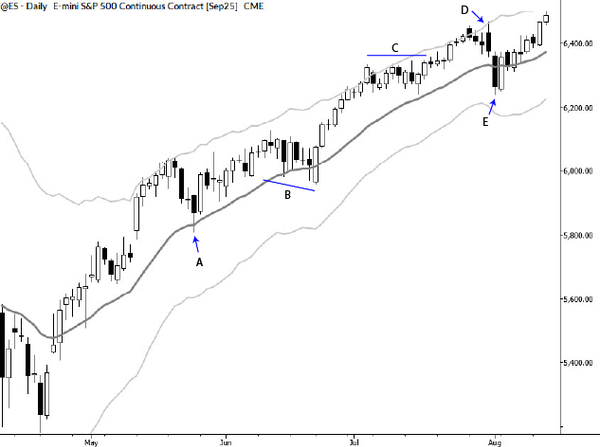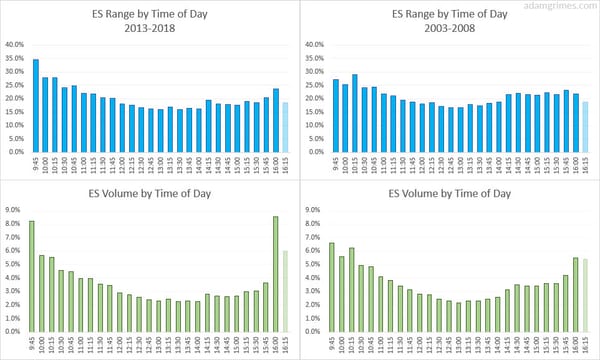First Principles of Technical Analysis (2/?)
The first principle of price behavior: Markets alternate between trends and trading ranges.
1: Alternation of Trend and Range
Continued from this post.
[dc]M[/dc]arkets alternate between periods trends and trading ranges. This first principle of market behavior is responsible for many trading losses because what is right in one market “phase” is precisely wrong in the other—if you incorrectly identify the market context, you will place one losing trade after another. Understanding the difference between how markets behave in trends and trading ranges and how it moves between the two phases is perhaps the first, and most important, skill in technical analysis.

There are two points to consider here. First, what do trends and trading ranges look like? In trading ranges, support and resistance tend to hold. Ranges (in this context, meaning the distance from the high and low of each individual price bar) tend to contract as the market seeks out areas where selling pressure is sufficient to stop price advances or where buying will arrest declines. Volume tends to be lighter and liquidity generally lower; smaller orders can have a large impact on prices as there may not be enough traders on the other side of the book to absorb the order.
Mean reversion strategies (fade trades) tend to work in trading ranges as the market trades back and forth through the same price multiple times. It would seem to be easy to trade in ranges—just sell at resistance and buy at support and watch the pile of money grow. In reality, it is not that easy. Resistance may fail as the market breaks into an uptrend, putting the trader on the wrong side of a new and vigorous trend. If the trader adds to shorts fading this new trend, losses can become truly… dramatic. On the other hand, there are many times where resistance fails, and the market trades a little bit higher to establish a new resistance area just above the old one. In this case, the trading range has simply been expanded; the right play would have been to hold, or even to add to, shorts on the break.
A simple definition of a trend is that it is an area where a market moves from one price to another. While technically true, this definition misses many subtleties and may be too broad to be useful. However you choose to define trends, your job is clear: get on the ride side of them. There are many specific trading plans and ways to accomplish this, but all with-trend trading plans seek to position the trader on the side of the trend.
The study of trends and trading ranges, and the correct techniques to apply in those areas, is fairly common in the literature of technical analysis. However, there is another area of study that is often neglected--the critical transitions between the two areas. This is a deep and complex subject because these areas, perhaps more than any other in the market structure, are subject to a high degree of randomness. Yes, there are patterns here, but they are obscured by volatility, fakeouts, and generally noisy price action. Unfortunately, much of the opportunity and also the danger in technical trading lies in these areas between trends and trading ranges, so traders must be able to navigate them successfully. This is a subject that will repay deep thought and study.
Next post: the second principle of market behavior, that trends are more likely to continue than to end...



